#sucellos
Text
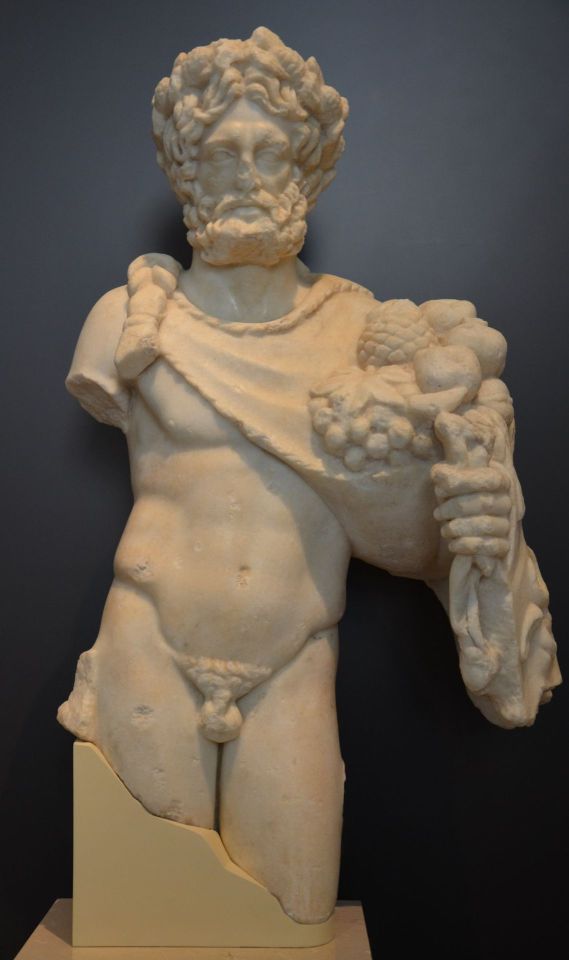
Statue de Sylvanus, musée archéologique national de Madrid. Genius loci. Sucellos.
15 notes
·
View notes
Text
this joint campaign is going exactly how you'd imagine it would.
#joint bg3 campaign#bg3#baldurs gate 3#Tavs: Sucellos & Anselm#dickhead husbands doing dickhead things
1 note
·
View note
Text

Delu̯âs (idols) for Sucellos, Nantosu̯eltâ, Ogmi̯os, Đîronâ, Carnonon (Cernunnos), Rosmertâ, and Lugus; a horse shoe amd small horse for Eponâ, an owl for Pali̯âcâ (the Cailleach), a black bear for Blau̯umuccumâtîr ("Blue-smoke-mother", the Blue Ridge Mountains deified), a wheel for Taranos, a wood tile with a Brunnos (B Rûnâ) rising out of fire and another with Beith (Ogham B) with a large candle to represent a hearth for Briganti̯â/Brìde, a picture of my Nanaw (grandmother) and some skull beads to represent Ancestors, a small stone with what look like eyes for the Aissus Sîdi (Nature-Spirits, faeries, etc), a hagstone with a small raven feather gifted to me by the raven, a small jar of wolf fur, a piece of birch to represent Bili̯os (the World Tree), a turkey feather in honor of the rightful inhabitants of Northwest Georgia (the Mvskoke and Tsalagi), and an image of all 15 Rûnâs.
#gaulish polytheism#gaulish paganism#gaulish pagan#celtic polytheism#celtic paganism#celtic pagan#southern polytheism#appalachian polytheism#appalachian paganism#appalachian pagan#pagan#polytheist#paganism#polytheism#altar#pagan altar
13 notes
·
View notes
Text
Mitologia - França

Arduinna: Arduinna é a deusa da floresta e da caça. Ela é a deusa tutelar da região das Ardenas (Bélgica, Luxemburgo e França), representada como uma caçadora montada em um javali.
Artio: Artio é a deusa da abundância e da vida selvagem, especialmente ursos. Seu nome é derivado da palavra gaulesa para "urso", artos.
Belenus: Belenus (Bélenus) é o deus da cura também associado ao fogo. Imagens de Belenus às vezes mostram ele acompanhado de uma mulher, a divindade Belisama.
Belisama: Belisama (Belissama) é a deusa ligada a lagos e rios, fogo e artesanato. Isso faz com que ela seja comparada com a deusa irlandesa Brigid. Belisama também é a companheira de Belenos, cujo nome contém a mesma raiz (Bel = brilhante).
Cathubodua: Cathubodua (Catuboduá) é a Deusa da guerra. Na língua gaulesa, acredita-se que o nome Cathubodua significa "corvo de batalha".

Cernunnos: Cernunnos (Quernunos) é o deus da vida selvagem, da natureza intocada. Ele é retratado com chifres, sentado de pernas cruzadas e usando um torc no pescoço. Uma das representações mais famosas de Cernunnos é o Caldeirão de Gundestrup.
Epona: Epona é a protetora dos equinos e acredita-se que ela também seja uma guia das almas (criaturas cuja responsabilidade é escoltar as almas recém-falecidas da Terra para a vida após a morte). O culto a Epona como padroeira da cavalaria foi difundido inclusive no Império Romano.
Ogmios: Ogmios é o deus da eloquência. Ele é algumas vezes retratado como um homem sorridente com longas correntes ligando sua língua às orelhas de um grupo de homens que voluntariamente e alegremente o seguem. Os celtas acreditavam que a eloquência é o poder supremo porque pode encantar os homens e controlá-los mais do que a força.
Nantosuelta: Nantosuelta (Nantossuelta) é a deusa da domesticidade, frequentemente associada à água. Seu nome pode significar "rio sinuoso" ou "vale iluminado pelo sol". Ela é companheira do deus Sucellos.
Sucellus: Sucellus é o deus da agricultura e do vinho. Ele é geralmente representado como um homem barbudo carregando um grande martelo. Sua companheira Nantosuelta às vezes é retratada ao seu lado. Quando juntos, são acompanhados por símbolos associados à prosperidade e à domesticidade.

Rosmerta: Rosmerta é a deusa da abundância e da riqueza. O nome Rosmerta significa "a Grande Provedora".
Sequana: Sequana é a deusa do rio Sena e da tribo celta Sequani.
Sirona: Sirona é a deusa da cura associada a fontes, cobras e ovos (símbolos da vida no mundo antigo). Ela também pode ser associada à astronomia, já que seu nome significa "estelar" ou "astral".
Taranis: Taranis (Táranis) é o deus do clima, associado ao céu. Seu nome significa "trovão". Ele é representado por um homem barbudo com um raio em uma mão e uma roda na outra. A roda de Taranis pode significar a compreensão dos celtas sobre o mundo natural e seus fenômenos por causa da agilidade com que a natureza se transforma.
#celtas#mitologia#mitologia francesa#mitologia celta#arduinna#artio#belenus#belisama#cathubodua#cernunnos#epona#ogmios#nantosuelta#sucellus#rosmerta#sequana#sirona#taranis
2 notes
·
View notes
Text
OC Tag Game
Tagged by: @ainyan
Tagging: anyone that wants to do this!!
I was going to do my FFXIV OCs but I wanna do the OCs I have for my original content. I was going to post art of them all but I cannot find the memory stick all my old art is on.
Favorite OC: It is between Michael and Loqi, For sure. I love them both so much. They are not the nicest OCs to get along with but I don't care about that.
Oldest OC: Sucellos AKA Vincent McKeznie. He has been around since the early 2000s. I created him as I was looking for a mysterious and magical figure but as time has gone by he has very truly changed. He is powerful but is just here for a good time. Isn't serious at all these days. While he is a force to be reckoned with you won't ever interact with that part of him. Sucellos is essentially, to put him in a box, a destroyer of worlds, an entity that keeps the balance but you'll more likely find him drinking iced coffee in Michael's cafe and annoying his children.
Newest OC: Zara! One of Sucellos' kids. I love her, she's smart and sarcastic. Collects books and rides a motorcycle, and has travelled to many different planets all in the name of knowledge but while she has a thirst for travel you can also very much find her in her apartment playing video games in her pyjamas because sometimes planet hopping just saps the energy out of her.
Meanest OC: Loqi, I don't think there is any contest here. He's a ruthless lawyer when he plays human, and has a very no-nonsense approach to fuckery. His cane has a dagger built into the handle and he has used it and will use it again.
Softest OC: Pan! He's a soft baby. He was abandoned as an infant and found by Michael's son who raised him. All Pan wants to do is start his own family and give them all of his love.
Most Aloof/Standoffish OC: Again, Loqi. You might think, 'why do you love him so much?' it's because he's a bitch and I like him so much. He is awful but deep down he is an endless font of love you just don't get to see that part of him in a way that translates into normal acts of love.
Dumbest (Affectionate) OC: Ares, he carry big sword he protect but he doesn't generally understand anything unless you explain it in the simplest of terms.
Dumbest (Derogatory) OC: Hm, not sure. Possibly Ryan.
Smartest OC: Toss up between Zara and Constantine, both of them are smart as Hell in different categories. If you need a math whiz or someone who is good with their hands, Constantine. If you want to learn about any civilization you speak to Zara.
Horniest OC: They are all horny in their own right, honestly like rabbits.
OC You'd Bang: Sucellos, Cygnus and Avaline.
OC You'd Be Best Friends With IRL: Sucellos for sure! He would be a lot of fun.
3 notes
·
View notes
Text
Carnonos, to me, is primarily a death god/psychopomp/world-traveler/liminal god with some prosperity aspects linked to the mysterious treasures of the Otherworld.
I'm quite certain that Nantosuelta is *also* primarily a cthonic goddess with heavy death aspects. She directs the natural riches of the cthonic Otherworld up towards us and her valley is where humans and animals of the Middle World go when they die. Warm and lush, earthy and peaceful.
I've moved away from Sucellos having to do with death/afterlife connotations as I believe that he has more to do with earthly agricultural/pastoral/rustic prosperity. Fields and farms and herds and crops. He may be the receiver of the cthonic riches that Nantosuelta directs- who distributes the riches in the Middle World and protects them. So that would make him more of a terrestrial deity to me.
Sirona is a healing goddess of cool waters, a goddess of purification, of calm. Shed actually one of the few deities that I've never questions her exact functions or aspects! She has liminal qualities and was known to have a healing cult in Gallo-Roman times.
Suluevia is a guardian spirit of people and places, like a guardian angel in a way. She's always with you and watching over you.
Artiu is a goddess I'm working on learning more about. Same with Cathubodua.
4 notes
·
View notes
Text
brythonnic deities + mythical humanoids
Abandart Abannia Abanniae Abannik Abelata Abelenus Abelins Abello Abellos Adsullo Adsullos Aerich Aerichaun Aeris Aerius Alang Alangelie Alanger Alaun Alibagon Aliban Alibannia Alibannus Alisama Ambie Ambis Ambisama Ambisanos Ancamullo Ancamulus Ancant Ancantaur Ancanthus Ancantia Ancantina Ancaste Andartio Andatus Andigo Andine Andinus Andman Andmantia Andra Andrasta Andrausio Aneton Anetonna Anetonnus Anetonus Anextio Anextios Angelie Anger Arabus Araniae Aranid Arannia Aranniae Arannik Arannus Araugarta Arduinn Arnemeti Artiomara Artios Arvernuno Asteris Aswangel Aswanger Atepomara Atepombie Atepombis Aufania Aufanid Aufanis Avent Aventara Aventaur Aventina Aveter Aveteris Avetter Avetteris Bandatis Bandatus Bandigo Bandine Bandman Bandra Bandraste Bannia Banniae Bannin Barintado Barintaur Barinyes Belata Belie Belin Belins Bellio Bello Bellos Boggan Boggang Boggangel Boggant Boggantes Boggar Boggargon Boggartio Boggaruda Boggarus Borrigan Brianos Briantia Brianus Brigan Brigantes Briggan Briggarus Britan Britannin Brite Brito Britonus Calibagon Calisanos Camna Campes Campire Campiren Cantaur Cantes Cantia Cantina Centado Centara Centia Centicore Centina Cernuno Cernus Changer Chaun Chaunus Cicoll Cicore Cimbrigan Cimbrite Cissoni Clope Clopes Clotaur Cluri Clurich Clurichan Cluricura Condart Condarta Condatus Contrebit Contres Contress Covent Coventara Coventaur Coventia Cyclope Cyclota Cyclotaur Damarabus Damaranis Damarusa Damon Damonopod Damonos Damos Demona Demonopod Demonos Devila Doppelgan Drasta Draste Draugart Drausus Dullo Dullos Encamna Encanthus Encasta Encaste Entara Entarabus Entaur Entia Entina Erich Erius Fagusa Faunus Gargon Garta Gartios Garus Gianos Giantado Giantes Giantina Gianus Gigan Gigang Gigangel Giganger Gigant Gigantia Gobling Goblins Gorgoyle Grania Granid Granis Granniae Grannik Gremling Gremlins Grendinus Gress Gwishinx Hiban Hibannia Hibannin Hobbito Hobgoblin Hueter Hueterius Hueti Huetia Huetio Huldrasta Huldraste Intado Intarania Intaranis Intaur Inthrope Inthus Iovant Iovantes Iovantess Iovantia Iovantina Jinna Joroguns Jotutis Kobor Koborrum Koborvo Korrigang Korrigant Korriggan Korrum Laress Laressis Latucarus Leprecat Leprechan Leucellio Leucello Leuceti Leucetia Lichan Lichaun Lugusalka Lycant Lycantado Lycantara Lycantaur Lycantess Lycantia Lycantina Mantess Manthus Mantia Maponopod Mertrios Mertrite Mertriton Minota Minoton Minotonus Mogumo Monos Moritan Morite Morito Mothmant Mullata Mullatus Mullos Mulus Nemausio Nemeti Nemetia Nemetio Nemetiris Nerecat Nerechan Nerechaun Nerehyena Neren Nerendel Nerewolf Nerichaun Nericura Nerintado Nerinthus Nerinyes Neris Nunnos Oceania Oceaniae Oceanis Ogremlin Ogremling Ogremlins Ogren Ogrendigo Ogrendine Ogres Ogressis Onius Polter Polteris Polterius Pomarabus Pomaruda Pomarus Pombie Robold Roborrum Roborvo Rudiant Rudiantia Rudianus Samara Samebis Samebit Sandart Sandarta Sandra Sanos Satyres Satyress Sedatis Seelin Seeling Seelins Segus Sirendel Sirendigo Smermaid Smerman Smertrite Sphin Sprigan Sprigang Spriggar Spritan Sprito Spriton Sucellio Sucello Suceti Sucetia Sucetio Sucetiris Sucius Tarabus Taraugar Tarausus Tennia Tenniae Tennik Tikbala Tikbalaun Titannia Titannin Titannus Titasgus Tridama Tridamon Trios Tritan Tritannus Trite Trito Trolluis Trownie Tyres Tyressis Undigo Undinus Valka Vampes Vampiren Veter Veterius Vetteris Vetterius Vheter Vheterius Vindonna Vinota Vinotaur Vinoton Vinotonna Virotuns Visucello Visucetia Visucetio Vosegomo Vosegus Wendel Wendine Wendinus Werechan Werechang Werechaun Wereid Weren Werendel Yerecat Yerehyena Yereid Yerendel Yerewolf Yetia Yetios Yetiris Yukionnus Zombero
#names#name stash#fantasy name generation#fantasy name#fantasy names#random names#stash of names#444names#444 names#dnd names#worldbuilding names#random fantasy names#random worldbuilding names#random fantasy name generator#character names#random character names#random character name#markovgen#markov namegen#markov name generator#markov name generation#markov#markov gen
1 note
·
View note
Text
The Known Great Weapons of the Original Twelve
Baruzai - The sword of Brand, also known as 'the eater of guilty flesh'. Whilst unremarkable in terms of the powers of the weapon itself, Brand wielded it with nigh-unparalleled skill, slaying many of Knight Convoy's partisans.
Colbrande - Made specifically for Dai Atlas I, the "master-sword" Colbrande incorporated a number of techno-arcana in its initial forging. Its photonic engine and spark nexus were uprated as to exploit his metapower. Over time, Colbrande would see further improvement, as to incorporate ancient Nebulan 'binary bonding' technologies. A replica of this sword is currently in the hands of Dai Atlas XIII.
Vengryn - Strider's Great Sword, marked with many runes of the pre-Kaoner alphabet. Its name was in reference to Strider's focus on avenging wrongs done against the people, especially those commited by Knight Convoy's armies.
Sucellos - A set of twinned Great Hammers, forged by the Primordial Drulim Drang for the Leper-Knight Lazara. When clanked together by their holder, they would glow red-hot, slowly shrouding the wielder in living flame. Lazara, owing to her frailty, only took them up but rarely - and only ever to defend those under her legendary hospice's care.
Judgement - A sword forged for Headsbot of Iacon, one of the few foreigners in the Original Twelve. On one side of its tang, were written the words "Cast in the Name of Primus Ye Not Guilty", on the other - "When this sword I do lift, I wish the sinner eternal life as a gift". Both of these inscriptions signified his role as the Circle's executioner. Though Headsbot fell in battle, his heirloom blade would pass into the hands of the Knight-turned-mercenary Deadlock.
0 notes
Text
Sucellus
In Caesar-occupied Gallia, Sucellos, one of the ancient Celtic gods, was in charge of agriculture, forests (and alcoholic beverages), as the post-conquest Gauls associated him with the Roman forest Sylvanus
0 notes
Text
Sucellos, le dieu gaulois du vin.
Sucellos est une divinité de la mythologie celtique gauloise, qui a conservé son nom celtique après la conquête, quoique latinisé en Sucellus. Le nom Sucellus ne nous est parvenu que dans des textes latins, dont notamment des invocations à deo Sucello. La forme gauloise aurait dû être Sucellos, mais n’est pas attestées dans les textes gaulois.
C’est un des plus grands dieux gaulois à en juger…
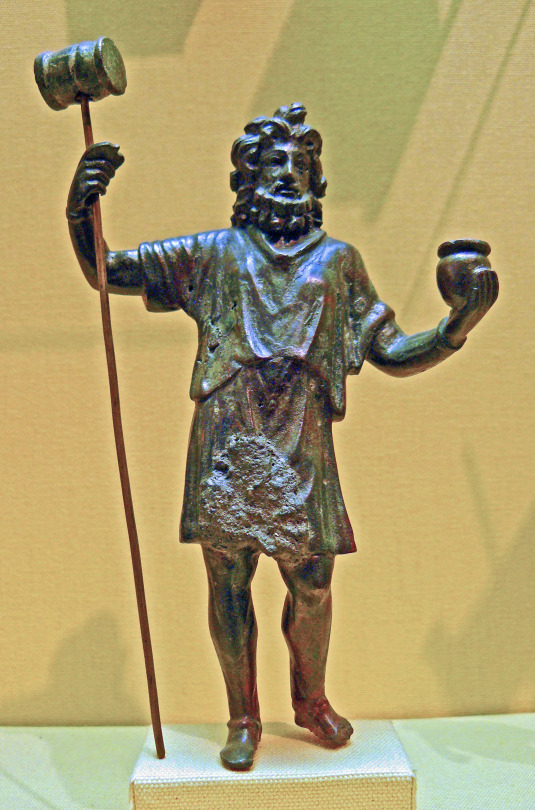
View On WordPress
0 notes
Text
Sukellos -Sucellos
God of Gaulish Celtic Mythology
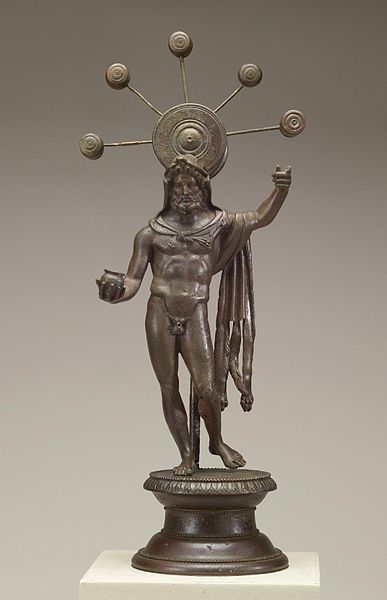
Walters Art Museum in Baltimore, United States of America ( This statue of Sucellus is the earliest known depiction of the god (circa 1st century AD). It was found in a Roman dwelling in France and stood in a private sanctuary (lararium).
Celtic god of agriculture,
forests and alcohol...
Characteristics
Latin name: Sucellus
Main function: God of life, death, crops and flocks
Place of origin: Gaul
Period of Origin: Celtic and Gallic Antiquity
Paredre: Nantosuelte - Nantosuelta
Equivalent(s): by syncretism Dagda, Sylvain, Thor[1]Symbols.
The name of the god is said to mean "good hitter" or "hit hard". The theonym is composed of the prefix su- which means "good, good" and cellos which designates the hammer (or striker)[3].
Judging by the number of his representations (more than 200), Sucellus is one of the greatest Gallic gods[4].

bronze statuette at the National Archeology Museum in Paris.
This god is known mainly in Gaul and all the elements concerning him (representation on a Unelles coin, some inscriptions and bronze statuettes) are from the Gallo-Roman period.
He appears to be old and bearded, dressed in the Gallic style of a long blouse tight at the waist and tight breeches, sometimes with boots. In addition to the mallet (or the hammer), he is represented with food utensils: cauldron, keg, wine amphora. It happens that the mallet is replaced by a sickle and that the foot of the god is placed on a keg.
He is sometimes accompanied by a dog.
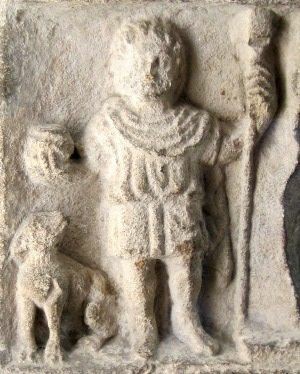
Relief of the Gallic Silvanus on an altar in Nîmes. The god carries his distinctive mallet and olla. A dog is next to him.
Syncretism
At least eleven Sucellus inscriptions are known[5], mostly in Gaul. An inscription (RIB II, 3/2422.21) was found at Eboracum (modern York) in Britain.
Sylvanus
In an inscription found at Augusta Rauricorum (modern Augst), Sucellus is identified with Silvanus[6]:
In honor (em) /d (omus) d (ivinae) deo Su /cello Silv (ano) /Spart (us) l (ocus) d (atus) d (ecreto) d (ecurionum)
The syncretism between Sucellus and Silvanus can also be seen in the work of Narbonne Gaul[7].
Thor
Sucellos bears strong similarities to the Germanic god Thor.
Archaeologist Jean-Jacques Hatt puts forward two possibilities:
• The resemblances between the two gods could result from a common origin dating from the Bronze Age, when the partition between Celtic or pre-Celtic cultures on the one hand and pre-Germanic on the other hand is not yet clear between North Germany. South and West[1]. The separation between the two groups would then date from the beginning of the Iron Age, more precisely from the peregrinations of the Hallstattian warriors, bearers of the long sword[1].
• Another possibility, at a much lower period (3rd-2nd century BC), the Gallic Sucellos could also have contaminated the Germanic Thor like the Celtic Teutates the Germanic Odin[1].
Hatt also notes that these two theories are not exclusive, an ancient Celtic-Germanic origin of Sucellus and Thor, as between Teutates and Odhin, could have facilitated exchanges and syncretisms between the two pantheons, the Germanic and the Celtic[ 1].
A god of life and death
He is the only Gallic god who has a somewhat infernal character[4].
Like the Irish Dagda, Sucellos kills and resurrects with his mallet, which he holds in his left hand. He stands straight, his foot resting on a barrel, a symbol of survival.
He is the Gallic equivalent of the Irish god Dagda, but not an exact replica. Indeed, as a dispenser of wealth, protector of crafts and agriculture, he falls under the third productive function (the other two being the priestly class of druids, and the class of warriors), whereas Dagda, in the Irish tradition, belongs to the first function, called priestly.

The sucellus of vienna
A god of crops and herds
Sucellos is a rural deity, a pastoral god, protector of crops and herds[8]. Sucellos is a "provider of food[9]" god. He is the holder of prosperity, symbolized by that other attribute which is the cauldron, in his right hand. He is a god of nurturing nature, forests and plantations[10]. Sucellod is also considered like the god of beer
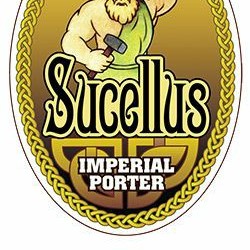
Beer ad (consume in moderation)
Her consort is Nantosuelte, which is a representation of fertility. Sucellos and Nantosuelte are associated on an altar discovered in Sarrebourg and on which we can read the following inscription:
Deo Svcello /Nantosvelte /Bellavsvs Mas /se Filivs V(otum).S(olvit).L(ibens).M(erito).
This can be translated: "For the god Sucellos and Nantosuelte, Bellausus, son of Massa, willingly and rightly fulfilled his vow."
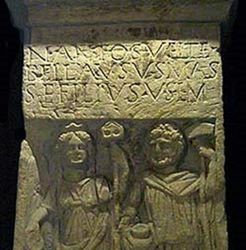
Altar of Sucellos and Nantosuelte in Sarrebourg.
Sucellos seems to have been particularly honored in the Rhineland and in the eastern part of Gaul, in Narbonne, during the Gallo-Roman period. An inscription has also been found in Britain.
• He was assimilated to the Roman god Sylvain, god of vegetation[12], especially in Gaul Narbonne.
• Paul-Marie Duval hypothesized a closeness to another Latin sovereign god, Dis Pater[13].
• Anne Lombard-Jourdan analyzes it as an avatar of the god Cernunnos[14].
• Strong links between Sucellos and Thor have also been put forward[1].
• Bernard Sergent compares him to Vishvakarma.
-------------------------------------------------------
contrary to what I could see as absurd, his feast day does not take place on November 11, the date dedicated to Thor, but his celebrations in Gaul took place on March 20 or 21, days of the spring equinox because he was a Agrarian God who largely dispensed food to men, he was celebrated with the aim of having good harvests in the year.
---------------------------------------------------------
Notes and references
• 1 / ↑ a b c d e and f Jean-Jacques Hatt, Myths and Gods of Gaul, vol 2
• 2/ ↑ Paul-Marie Duval, The Gods of Gaul, Paris, Payot, 1993, p. 62.
• 3/ ↑ Xavier Delamarre, Dictionary of the Gallic Language, Paris, Errance, 2003, p. 113, 282, 283 (ISBN 2-87772-237-6).
• 4/↑ a and b Paul-Marie Duval, Great Gods of Gaul [archive], Publications of the French School of Rome, Year 1989, 116, pp. 223-234
• 5/ ↑ Jufer and Luginbühl (2001), p. 63.
• 6/ ↑ AE 1926, 00040 [archive]
• 7/ ↑ Duval (1993), p. 78.
• 8/ ↑ Félix Guirand, General Mythology, ed.
• 9/ ↑ Paul-Marie Duval, The Gods of Gaul, p. 63.
• 10/ ↑ Jean-Paul Persigout, Dictionary of Celtic Mythology, ed. of the Rock, p. 280, Monaco, 1985, (ISBN 2-268-00968-8)
• 11/ ↑ Philippe Voluer, The Big Book of Beer in Alsace, Editions Place Stanislas, 2008. p23
• 12/ ↑ Record of the National Archaeological Museum, Saint-Germain-en-Laye.
• 13/ ↑ Paul-Marie Duval, The Gods of Gaul, p. 64.
• 14/ ↑ The origins of Carnival, ed. Odile Jacob, Paris, 2005, p.196 (ISBN 2-7381-1637-X).
Bibliography
• Stéphanie Boucher, "The image and functions of the god Sucellus", in The world of images in Gaul and neighboring provinces, Caesarodunum, 23, 1988, p. 77-85.
• Paul-Marie Duval, The Gods of Gaul, Paris, Payot, 1993, 169 p. (ISBN 2-228-88621-1)
• Bernard Sergent, "Sucellus and the barrel", in Marco V. García Quintela, Francisco J. González García and Felipe Criado Boado dir., Anthropology of the Indo-European World and material culture. Proceedings of the 5th international Colloquium of Anthropology of the Indo-European World and comparative Mythology, Budapest, Archaeolingua, 2006, p. 61-80.
• Raymond Christinger and Willy Borgeaud, Ancient Swiss Mythology, Geneva, Georg-Musée d'Ethnographie de la Ville de Genève, 1963, 318 p. (pages 147-214)
#sukellos#sucellos#celtic god#dieu celtique#alban eilir#équinoxe printemps#druidisme#druidism#gallish god#gallic god#dieu de la fertilité#dieu gaulois#celtic mythology#mythologie celtique#spring equinox#spring#ostara
33 notes
·
View notes
Text

Beautiful Sucellos and Nantosu̯eltâ delu̯âs (idols) made by Helvetian Hands (Artocatos Taranicnos/Carl Grimm)!
#sucellos#sucellus#nantosueltâ#nantosuelta#gaulpol#gaulish polytheism#galatibessus#gaulish#gallic#idol#pagan idol#pagan crafts#pagan business#helvetian hands
44 notes
·
View notes
Text

A recently done commission for @writerman , their OC Sucellos. Mysterious god of the forest, who likes it chill and casual
Thank you so much for commissioning me, my friend!!
9 notes
·
View notes
Photo
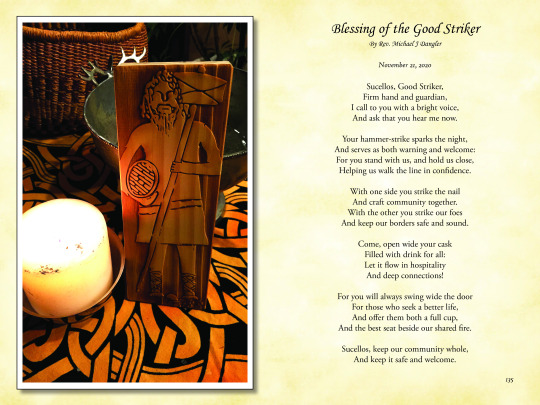
Blessing of the Good Striker
Sucellos, Good Striker,
Firm hand and guardian,
I call to you with a bright voice,
And ask that you hear me now.
Your hammer-strike sparks the night,
And serves as both warning and welcome:
For you stand with us, and hold us close,
Helping us walk the line in confidence.
With one side you strike the nail
And craft community together.
With the other you strike our foes
And keep our borders safe and sound.
Come, open wide your cask
Filled with drink for all:
Let it flow in hospitality
And deep connections!
For you will always swing wide the door
For those who seek a better life,
And offer them both a full cup,
And the best seat beside our shared fire.
Sucellos, keep our community whole,
And keep it safe and welcome.
#ADFDruidry #PrayerADay
[Image description: Sucellos wood carving by Rev. Michael J Dangler, available at The Magical Druid]
10 notes
·
View notes
Text
Where does Sucellos fit it?
The wealth that is generated up from the primordial spring by Nantosuelta is sent to the realms, including ours. Sucellos sets boundaries so that malevolent things not dare cross and gives that wealth to the middle world, the animals and spirits and to us- particularly the common folk.
2 notes
·
View notes
Text
brythonic deites + the entire article about swords on wikipedia in suomi
Abandarta Abandatis Abandatus Abelata Abelatus Abelenus Abeli Abelisama Abellos Abellä Adsullo Adsullos Aerikka Aerikkaa Aerikkat Aeris Aerius Agronssis Agrus Alaiset Alaistuu Alaisuus Alasis Alasista Alasistuu Alasistä Alisagrus Alisama Alisamara Alisäosia Alkuperä Alkuperän Ambis Ambisama Ambisanos Ancamullo Ancamulus Ancastama Ancaste Andartio Andartios Andatis Andatus Andinus Andraskaa Andraskan Andrasta Aneet Anetonnus Anetonus Anextio Anextios Ankoura Arabus Araniae Aranis Arannia Arausus Arduinnia Arduinnä Arnempina Arnempiä Artios Aseena Aseens Aseensä Asein Aseitai Astama Asteekka Asteluun Asteta Astetaan Astettu Astetty Astetään Atepomara Aufania Aufanis Aventina Aventtiin Avetaan Avetaania Avetaas Aveteluun Aveteris Barintara Belata Belatus Belisanos Bellio Bello Bellos Bellä Brianos Brianus Brita Britai Britaiset Britaneet Britasgus Camna Campesta Campestä Camullata Camullo Caneet Canetonus Canextio Canextios Cernus Cicollut Cimbrit Cimbrita Cissa Cissain Cocidiaan Condarta Condartio Condatus Contres Contresta Contrestä Coven Coventia Damarus Damonen Damos Elisagrus Elisama Elisamara Elisanos Elisäosia Esimeris Esimerius Esimesta Esimestä Esimetia Esimetio Eteluun Eterikkaa Eteris Eterius Eteroita Eterä Eteräinen Eterän Grania Graniae Granis Grannia Granniae Hueteluun Hueterius Hueterä Hueterän Huetia Huetio Huetios Hyvindon Intara Intarania Intaranis Inthus Iovantia Iovantina Iovat Isoturit Isoturita Isotutis Joissa Joitai Joitaneet Joitannus Joitasgus Joiterius Joiterän Joitetaas Joitettu Joitetty Joitetää Joitetään Jokona Kahdellio Kahdello Kahdellos Kahdellä Kahdens Kahdensä Kahvaste Kaksis Kaksissa Kaksista Kaksistuu Kaksiterä Kiinna Kiinnia Kiinniae Kiinnä Kiven Kiventia Kiventina Kivesta Kivestama Kivestres Kokona Koosta Koostama Koostutis Koura Kädellio Kädello Kädellos Kädens Kädensä Käyteta Käytetaas Käytettu Käytetty Käytetää Käyttiin Käyttään Latucarus Latus Leucellio Leucello Leucellos Leucellä Leucetia Leucetio Lisagrona Lisagrus Lisama Lisamarus Lisanos Lyömäase Lähinna Lähinnia Lähinniae Lähita Lähitai Macaneet Maponnus Miekat Miekka Miekkaa Miekkat Miekki Mitää Molemmat Molempiä Monaiset Monaista Monaistä Monen Monentia Monentina Morit Morita Moritai Muista Muiste Muistettu Muistoase Muistutis Muistuu Muistä Mullata Mullatus Mullos Mulus Muodon Muodonnus Muodosta Muodostuu Nemausio Nemetia Nemetio Nemetiris Nemetrios Nemetriä Nempina Nempiä Nericura Nerikka Neris Noden Nodensä Obsidiaan Obsidius Olemmat Olemmilta Olempina Olempiä Olluis Olluista Olluiste Olluistuu Olluistä Ovantia Ovantina Palaiset Palaista Palaistuu Palaisuus Palasis Palasissa Palasistä Palaunus Pisiä Pista Piste Pisteluun Pisteta Pistettu Pistoase Pistutis Pistä Ponnessis Ponnestä Ponnus Ponos Ponus Prona Pronaistä Pronssis Puustama Puuvarres Raskaa Raskan Rasta Raste Rasteekki Rasteluun Rastettu Rastetään Reunoilta Roborrum Roborvo Rudiaan Rudiaania Rudianus Ruodonnus Ruodosta Ruodostuu Sedatis Segus Sentia Sentina Senttivät Smericura Smerikka Smeris Smerius Smerkki Smertriä Sucellio Sucello Sucellä Sucetia Sucetio Sucetios Sucetiris Sucius Taania Taanis Taisemmat Taiset Taista Taiste Taistä Taisucius Taisuus Tapauksis Tarabus Tarania Tarannus Tarausio Tarausus Tarkoita Tericura Terikka Terikkaa Terikkat Teris Terius Teroita Teräinen Teräiskaa Teräiskan Teräista Teräistuu Tridama Tridamona Trios Useita Valmista Valmiste Valmistuu Valmistä Varhaiset Varhaista Varhaistä Varres Varresta Varrestä Vetaan Vetaania Vetaanis Vetaas Veteluun Veterius Veterä Vheteluun Vheterius Vheterä Vheterän Vindon Viroturit Visucello Visucellä Visucetia Visuus Visuusta Vosegomo Väiskaa Väiskan Väista Väiste Väisteta Väistetää Väistutis Väistuu Väistä Yhdellio Yhdello Yhdellos Yhden Yhdens Yhdensä Yleena Yleens
#names#name stash#fantasy name generation#fantasy name#fantasy names#random names#stash of names#444names#444 names#dnd names#worldbuilding names#random fantasy names#random worldbuilding names#random fantasy name generator#character names#random character names#random character name#markovgen#markov namegen#markov name generator#markov name generation#markov#markov gen
1 note
·
View note